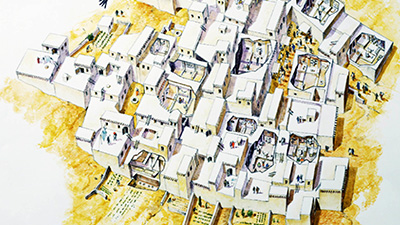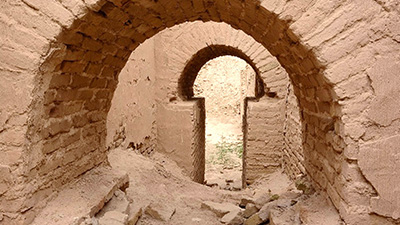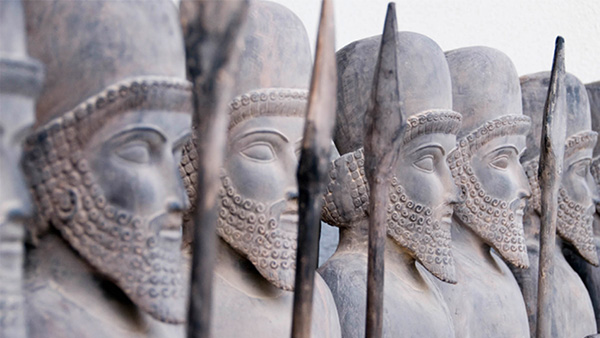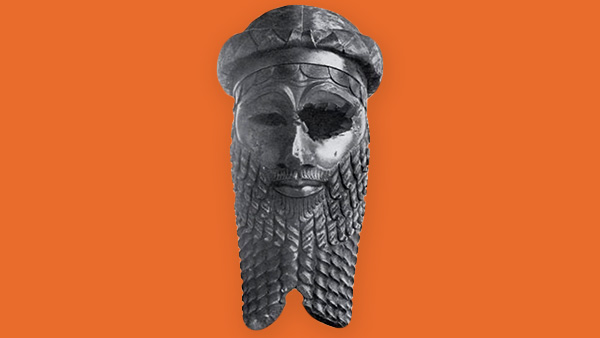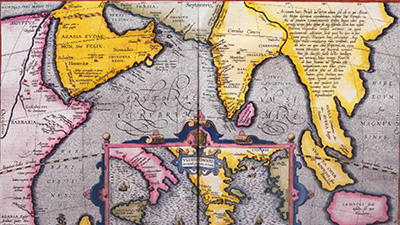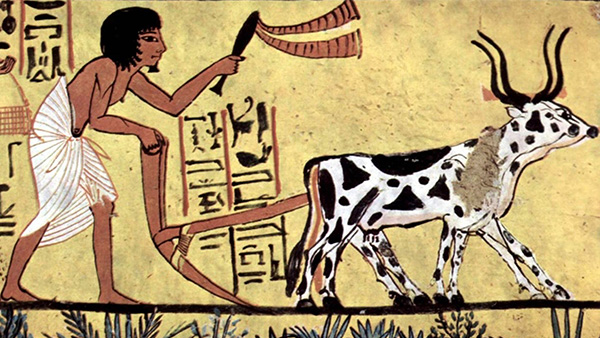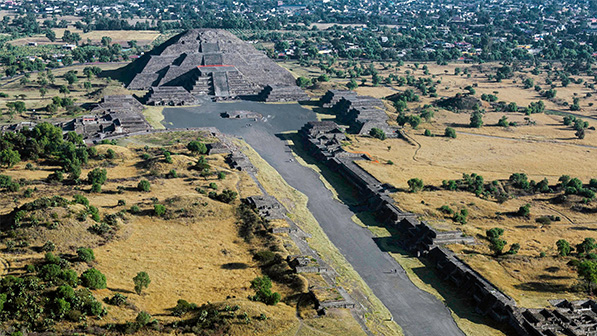Cities, States, and Empires
Teacher Resources
Driving Question: How did complex societies develop and how did they impact humans inside and outside these communities?
Once people started growing their own food, everything changed. Small groups evolved into massive, complex societies with thousands—even millions—of people. Explore how some of these communities grew into powerful cities, states, and empires, and how those changes shaped life—for both for the people within them and the wider world.
Learning Objectives
- Investigate the development of agrarian societies.
- Understand the causes and effects of the development of cities and states.
- Use close reading to analyze how and why complex human societies formed.
Opener: Cities, States, and Empires
To teach this lesson step, refer to page 2 of the Lesson 0.1 Teaching Guide.
Ancient cities may not look like the ones we know today, but understanding the defining characteristics of cities, societies, and empires is key to making sense of the past.
Cities, Societies, and Empires
To teach this lesson step, refer to page 2 of the Lesson 0.1 Teaching Guide.
Farming changed everything: Villages grew into cities and states, trade networks expanded, and people built governments and religions to navigate their new, more-complex world.
-
Guiding Questions
-
Before you watch
Preview the questions below, and then review the transcript.
While you watch
Look for answers to these questions:
- Why does this video begin with a letter from Iddin-Sin?
- How did agriculture change human societies in this period?
- How did urbanization help create long-distance trade routes?
- What are states, and why were they important to early agrarian societies?
After you watch
Respond to this question: Do you think we should take Iddin-Sin’s four-thousand-year-old letter seriously as historical evidence? Why or why not?
Key Ideas
The First Villages
To teach this lesson step, refer to page 4 of the Lesson 0.1 Teaching Guide.
Before cities and large states, there were small villages and towns. What can life in those small communities tell us about who we are now?
-
Guiding Questions
-
Before you read
Preview the questions below, and then skim the article. Be sure to look at the section headings and any images.
While you read
Look for answers to these questions:
- How was life in early farming villages different from life in hunter-gatherer communities?
- What do we know about women’s lives in early farming villages?
- What are some examples of trade between villages?
- How did changes in production and distribution affect communities?
- In what ways did village networks affect the population of villages, towns, and cities?
After you read
Respond to this question: What do you think are some of the limitations of archaeological evidence?
Urbanization
To teach this lesson step, refer to page 5 of the Lesson 0.1 Teaching Guide.
Cities changed everything. Read the article to explore how cities reshaped economic and social life.
-
Guiding Questions
-
Before you read
Preview the questions below, and then skim the article. Be sure to look at the section headings and any images.
While you read
Look for answers to these questions:
- Where did cities first appear?
- What were the pros and cons of living in a city during this time?
- What innovations were necessary to the growth of cities?
- How did job specialization allow cities to grow?
- How did cities contribute to larger and more-complex networks?
After you read
Respond to these questions: Do you think it would have been better to live in an urban or rural area during this time? Why?
States and Empires
To teach this lesson step, refer to page 6 of the Lesson 0.1 Teaching Guide.
What’s a state? What’s an empire? Historians frequently debate these questions. Explore these articles to find answers, and then apply what you’ve learned in the activity.
-
Guiding Questions
-
Before you read
Preview the questions below, and then skim the article. Be sure to look at the section headings and any images.
While you read
Look for answers to these questions:
- What is a state?
- How do some anthropologists define a state?
- What is Yuval Harari’s argument about the state?
- What are some characteristics of most urban states?
- What are two theories about why people form states?
After you read
Respond to these questions: Which definition of a state do you find most convincing? Why?
-
Guiding Questions
-
Before you read
Preview the questions below, and then skim the article. Be sure to look at the section headings and any images.
While you read
Look for answers to these questions:
- How does this author define empire?
- How were empires created?
- Why would rulers want to create empires?
- What is the relationship between center and periphery in an empire?
- What challenges did early empires face?
After you read
Respond to these questions: Do you live in an empire? Why or why not?
Ancient Trade Routes
To teach this lesson step, refer to page 9 of the Lesson 0.1 Teaching Guide.
Trade routes connected the ancient world, spreading innovations, goods, and ideas.
-
Guiding Questions
-
Before you read
Preview the questions below, and then skim the article. Be sure to look at the section headings and any images.
While you read
Look for answers to these questions:
- Why were the Afro-Eurasian trade networks more developed than in other parts of the world?
- What does the Standard of Ur tell us about regional trade networks during this time?
- Why was long-distance trade more difficult in Mesoamerica than in Afro-Eurasia?
- What do obsidian, jade, and pottery have to do with hierarchy in Olmec society?
- How did the rulers of cities and states help promote trade networks?
After you read
Respond to these questions:
- What were the benefits of expanding trade networks?
- What were the downsides of expanding trade networks?
New Tools, New Empires
To teach this lesson step, refer to page 10 of the Lesson 0.1 Teaching Guide.
Explore three different regions to compare how ancient trade networks affected each one. Then, use what you’ve learned in the activity to draw conclusions about the impacts of these exchange routes.
-
Guiding Questions
-
Before you read
Preview the questions below, and then skim the article. Be sure to look at the section headings and any images.
While you read
Look for answers to these questions:
- Why do historians divide early human history using terms like Stone Age, Bronze Age, and Iron Age?
- What made iron both difficult and easy to make?
- How did iron-smelting technologies develop and spread?
- What does iron have to do with population growth?
- What environmental impact did iron-smelting technologies have?
After you read
Respond to this question: Can you think of any other technologies besides iron that have completely reorganized communities, networks, or systems of production and distribution?
Societies Develop
To teach this lesson step, refer to page 11 of the Lesson 0.1 Teaching Guide.
Farming led to both cities and states, but even though many societies had similar structures and strategies, they weren’t all the same.
-
Guiding Questions
-
Before you read
Preview the questions below, and then skim the article. Be sure to look at the section headings and any images.
While you read
Look for answers to these questions:
- What is the definition of a state?
- Where and when did agrarian societies emerge first?
- What processes led people to form states?
- Where were there regions without “early societies”?
- What were some common characteristics of agrarian societies?
After you read
Respond to this question: Why do you think some historians prefer not to use the word civilization?
Teotihuacan and Maya City-States
To teach this lesson step, refer to page 12 of the Lesson 0.1 Teaching Guide.
Welcome to the ancient city of Teotihuacan, the dominant power in the ancient Mesoamerican region. Think you know what an ancient city was like? Teotihuacan might surprise you.
-
Guiding Questions
-
Before you read
Preview the questions below, and then skim the article. Be sure to look at the section headings and any images.
While you read
Look for answers to these questions:
- What are some ways that Mesoamerica differed from Afro-Eurasian regions where many of the first complex societies developed?
- How did the Maya overcome the environmental challenges they faced?
- How did a drought destabilize the authority of the Maya rulers?
- What are some explanations for why Teotihuacan grew so large and important?
- What are some possible explanations for Teotihuacan’s collapse?
After you read
Respond to this question: Is the area you live an environment that might have encouraged the development of ancient complex societies?
Closer: Cities, States, and Empires
To teach this lesson step, refer to page 13 of the Lesson 0.1 Teaching Guide.
Think about what you know to be true—and false—about the first cities, states, and empires. Can you tell what’s real and what’s not?


